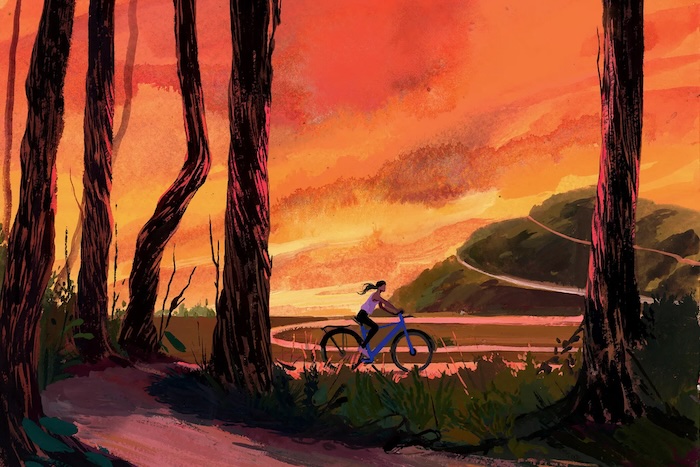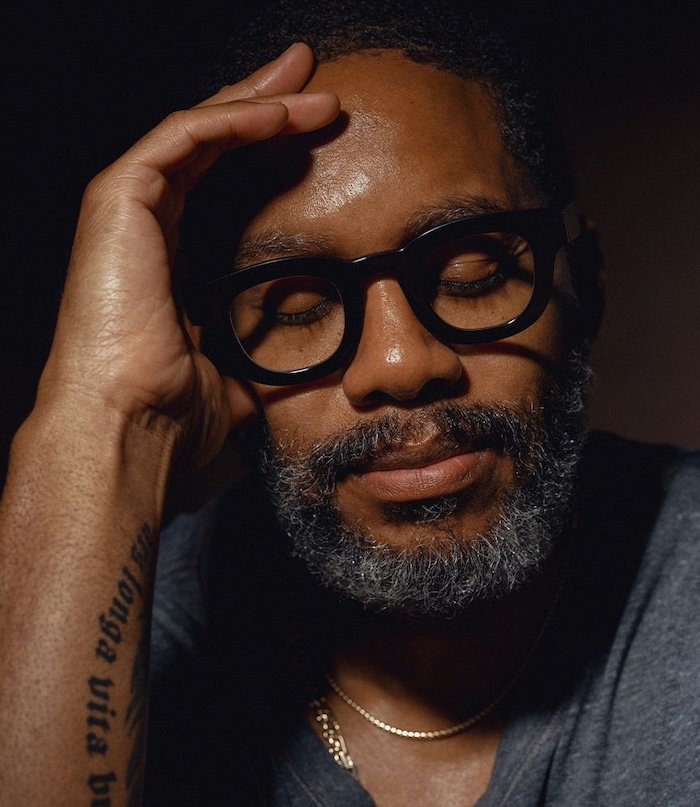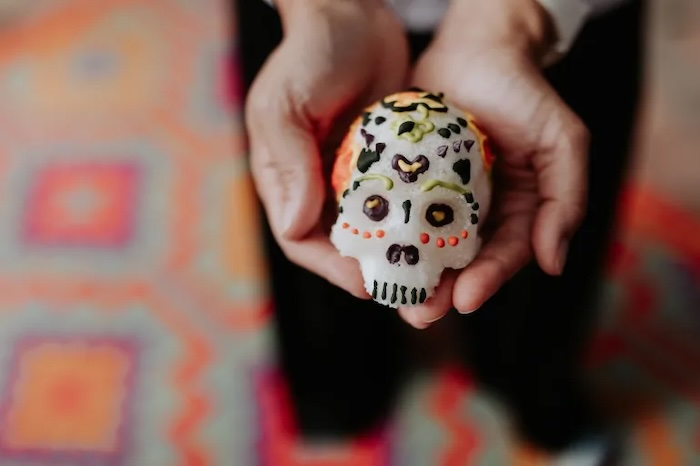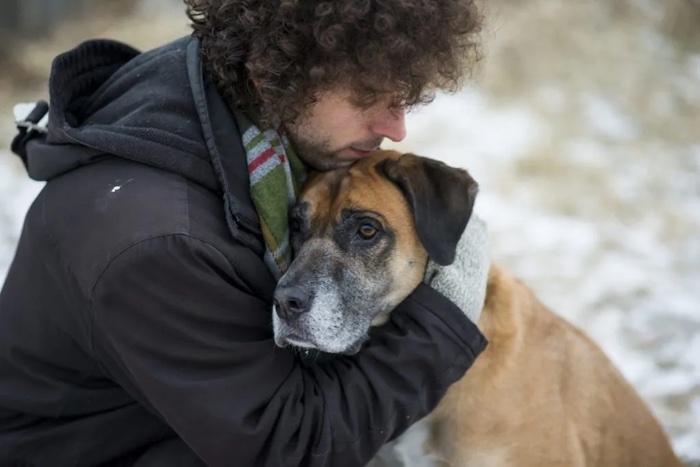— A grieving mother finds a new beginning on two wheels.

By Jess Mayhugh
My first bike was lavender and had Big Bird on it, a sight to behold under the Christmas tree. I rode that thing until the training wheels practically fell off — gliding around our back alley, cutting through baseball fields and, much to my mom’s horror, thudding down our basement stairs one afternoon.
Luckily, that incident didn’t scare me off bikes, and I continued to ride into my teenage years. But a driver’s license meant I abandoned my bike. The wheels stopped rotating, the bell stopped ringing and my helmet stayed clipped in a dim corner of our basement.
My mom died following a grueling battle with multiple sclerosis when I was barely 18. For years afterward, I distracted myself with college-aged escapism: moving away, making new friends, sneaking into bars, taking road trips and ultimately earning a degree.
I would head home for breaks and holidays, driving around in my mom’s old Hyundai Excel hatchback. Every winding turn reminded me that, while I was moving through life and becoming an adult, part of me was still stuck in place. Only during these drives would I allow myself to feel the weight of losing her. I thought grieving was something you did alone.
***
I returned to biking when a lot of people did, at the beginning of the pandemic. I bought a beach cruiser on Craigslist and spent my evenings whizzing along the Baltimore waterfront amid a sea of dog walkers and other pedestrians trying to figure out what was going on in the world.
My husband and I moved to a much hillier part of town at the end of 2020. I took advantage of flat trails where I could, but spent many evenings walking my bike up inclines, pathetically, as joggers passed me by. When I got pregnant, I continued cycling, but my growing belly got in the way of my legs and, by the time I hit my third trimester, my form was totally off.
I left my bike in the basement once again to collect dust. But life led me back to it when our newborn daughter, Lucy, died from a birth-related brain injury in the fall of 2022.
My grief looked a lot different than it had two decades prior. I was a mother who had lost a daughter, not the other way around. Instead of veering away from the deep, dark feelings, I was mature enough to realize I had to lean into them.
There was no escaping it — it was on my body, in my husband’s eyes. We both tried every form of therapy we could: individual, couple, physical. I also did the confrontational work that I knew was necessary (seeking out other stories of infant loss, sharing my own). In part, I was caring for that lonely, lost teenager inside of me.
The biggest difference, though, was accepting help from friends and family. Loved ones cleared our house of all the “baby things” while we were still at the hospital and dropped endless amounts of food on our porch. This time, I let myself be cared for; I allowed support to seep into every crevice of my life.
***
A friend invited us on her family’s trip to the Outer Banks, six weeks after I gave birth. I missed being active and was grasping at anything that would bring me happiness. So we dedicated one day of our trip to renting bikes.
I worried about my pelvic floor, so I only intended to ride a couple of miles. But, before long, I had biked 10 through the salty North Carolina air, over boardwalk planks with views of egrets flying up from the dunes. I had missed this feeling of being at once untethered yet in control, and I wanted to take the flat terrain back home with me.
Several months later, after my husband and I had returned to work and attempted to find semblances of normalcy, we took another trip to visit family in northern Maine. A common trope with grieving, people say, is that you no longer “sweat the small stuff.” But, on this trip, I realized the small stuff could actually save me.
My scientist uncle had MacGyvered an electric bike together for my aunt to ride around their remote lake town. I borrowed it one morning and, with occasional help from the motor, I started seeing those rocky hurdles in my rearview mirror. For hours, I coasted up and down hills, through tall Eastern pine trees. I braked for critters, took in lake views and reminded myself — as I’ve often had to do — that there are still ways to experience joy in the wake of unspeakable pain.
I wanted that joy to continue. So, when I returned home, I purchased an e-bike online and took it to the local shop to get it tuned up. I test-rode it in my back alley, just as I had done as a young girl. Then I was off, fearlessly making my way to that too-steep park, knowing I had a safety net when I needed it. With every pedal stroke, I could feel my jaw loosening, heaviness lifting from my shoulders, my heart opening to optimism again. I was finding a way up, and through.
I spent practically every day last fall, a year since our daughter’s death, ably sailing up hills, with twigs and leaves crunching beneath my tires. Most mornings, I listened to playlists or podcasts. But, at the beginning of one ride, my headphones died and I was forced to take in my surroundings, to be fully present. Everywhere I looked, there was such life on display: marching bands practicing routines, disc golfers hurling Frisbees, women taking garden tours at the arboretum, families of deer peeking through the trees.
For the first time since Lucy died, I felt lucky — that I lived so close to these tree-lined trails, that I was able to witness the softer sides of nature, that I could pedal at all.
Now with spring in like a lion, I’m back out riding. When hills come up on the horizon, I don’t let pride stand in the way. I crank up the electric-powered motor a couple of notches and allow it to give me a boost. Slowly, through every swerve and switchback, grief has given way to gratitude. But only because I have help moving through it.
Complete Article ↪HERE↩!
















